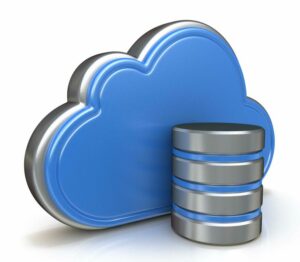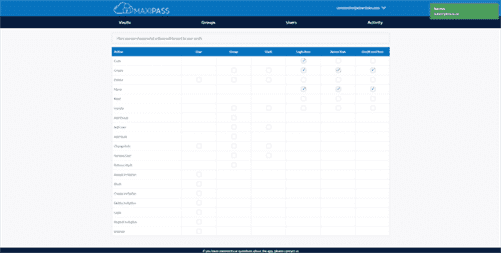404 403 Page not found or access denied
Professional automatic updating also reduces the likelihood of compatibility issues and security flaws. However, PaaS can also cut or even eliminate the cost of software licensing. Additionally, PaaS can lower your overall application management costs by taking care of patches, updates, and other administrative activities. Developers have immediate access to a full software development environment with PaaS, including pre-built components and sample code. In this blog, we’ll concentrate on the platform as a service model (PaaS), discussing its advantages and disadvantages.

For those who consider cloud services for their business, it’s important to grasp the difference between IaaS, PaaS and SaaS — the core cloud models available. You should choose the particular model depending on your business requirements and on the number of tasks you want to perform yourself or delegate to the service provider. Forbes experts predict that 83% of enterprise workloads will be in the cloud by 2020.
PaaS Disadvantages
The decision of selecting any one model out of the above-mentioned list is completely based on your business requirement and the kind of task you want to execute. “PaaS vendors look after security problems, backup issues, system updates and manage servers. It is safe to say that SaaS has been the most popular cloud computing model so far.

Cobalt Iron’s enterprise-grade backup and recovery solution is known for its hands-free automation and reliability, at a lower cost. Similar to SaaS, PaaS follow subscription-based pricing model but the key difference lies in the level of control offered to users. There are several vendors that offer SaaS solutions and some of them include Cisco WebEx, Salesforce, Dropbox, Google Apps, https://www.globalcloudteam.com/ GoToMeeting, Gmail, Office365, etc. There are limits to how much data storage you can occupy and use in a virtual workspace. Upgrading storage capacity may incur extra costs and are usually more expensive than local storage. If the business is dependent on the provider then changing vendors or resorting to another infrastructure can interfere with and slow down business operations.
What are real examples of PaaS in IoT?
PaaS delivers applications over the internet and this is the main driver behind its success. The end-user does not need to download the app, instead, they can run the software directly on their browser which makes SaaS highly scalable and, of course, easy to use and manage. Examples of PaaS in IoT include Microsoft Azure IoT Hub, AWS IoT Core, Google Cloud IoT Core, and IBM Watson IoT Platform. These platforms offer services like device management, data analytics, and integration tools, enabling developers to create end-to-end IoT solutions. A decade ago, everyone was talking about moving applications to the cloud, meaning uprooting something running on a private server and taking it to a cloud provider. The original models of cloud computing — IaaS, PaaS and SaaS — reflect three ways of doing that.
PaaS vendors pass on total infrastructure require for app development where software developers are in control of the code. When it comes to cloud computing, Platform as a service disadvantages of paas (PaaS) is a paradigm that allows for the rapid and accurate development of applications. In this blog, we are discussing PaaS benefits, disadvantages, and best practices.
7 Support
What’s happened instead is that the cloud has become more of a universal front end to legacy data center applications. For businesses with significant custom development needs, making the move to PaaS can be a wise business decision. Platform as a service (PaaS) is essentially a layer between infrastructure as a service (IaaS) and software as a service (SaaS). While IaaS provides just the pay-as-you-go infrastructure for a company, PaaS steps it up by also providing a variety of tools needed
to create applications. Meanwhile, SaaS is ready-to-use software that’s available via a third party over the internet. Another advantage of PaaS is that it provides a consistent development environment across different teams and projects.
- Overall project time, developer resources, and project budgets are all reduced as a result.
- The services of the SaaS model are available on a subscription basis and your application is good to go once you get logged in using your username and password.
- Take these pros and cons into consideration when evaluating PaaS platforms.
- From its unique emphasis on SDLC and developer experience to its affordability, PaaS has a lot to offer as a cloud service.
- Some SaaS products, such as Gmail, are free for the end-user, and some have “lite” versions with tiered pricing that include more advanced features and customization.
- Since the topic is urgent, we want to tell you about the difference between cloud services models and provide examples of SaaS, PaaS and IaaS.
Automated security patches and upgrades are made possible by PaaS cloud services. This ensures that there are no security flaws and that the application is running on the most recent version and patch. By launching pre-configured environments, users can focus on development, prototyping, and developing new products without having to worry about computing resources. Software features that the majority of developers require are available pre-built, ranging from more general functionality like database support to more application-specific features like IoT support.
How PaaS Works?
The benefits of PaaS are very similar to the benefits of IaaS, but PaaS requires less time and skill for management. The biggest advantage PaaS offers in relation to the other cloud delivery models is the way it can speed the development and deployment of new applications. For that reason, it’s usually a good choice for enterprise application development teams that are creating new cloud-based applications. PaaS (wiki) is referred to as a cloud platform that offers runtime environment for testing, developing, running and customizing applications. On the virtue of PaaS solutions, developers can easily deploy applications without the requirement of any infrastructure.
PaaS delivers a secure platform for developers to create software and apps for consumers to use. Thus, it enables businesses to design and develop applications integrated into the PaaS via special software components. To businesses, IaaS provides servers, networking, storage, and an overall visualization (dashboard or API) to manage and control your business infrastructure smoothly. Some providers even go beyond that and offer services like message queuing, databases, etc. PaaS is here to automate Ops and focus on Dev because this is where its use and tools bring value. Every service provider should aim to go further than simply deploying an app or a database and this is why PaaS was created to be more than just an abstraction of infrastructure or a cloud platform.
SaM CloudBOX PaaS
PaaS providers provide various programming languages for the developers to develop the applications. Some popular programming languages provided by PaaS providers are Java, PHP, Ruby, Perl, and Go. What PaaS really brings to the table is the added value of user experience, which is crucial for the use of any cloud computing services.

If the vendor providing IaaS goes bankrupt and shuts down, the users will lose access to the services as well as any data which may be stored on the servers. IaaS is usually cheaper than having to purchase hardware and then going through the set up costs. It also helps to save money in maintenance and security as this is provided by the company.
Infrastructure As A Service (IaaS) is a cloud-based computing service which is a under a category of Service Model.
As long as they have access to internet, they will be able to use the software. However, switching to a modest SaaS solution is better if you require little flexibility and prioritize usability. Unlike SaaS or PaaS, IaaS clients manage applications, runtime, operating systems, middleware, and data. And with its increased popularity, businesses all over the globe are rapidly moving from their traditional on-premise services to cloud environments. PaaS allows you to develop and implement new applications without the need to spend time creating your own work environment.
